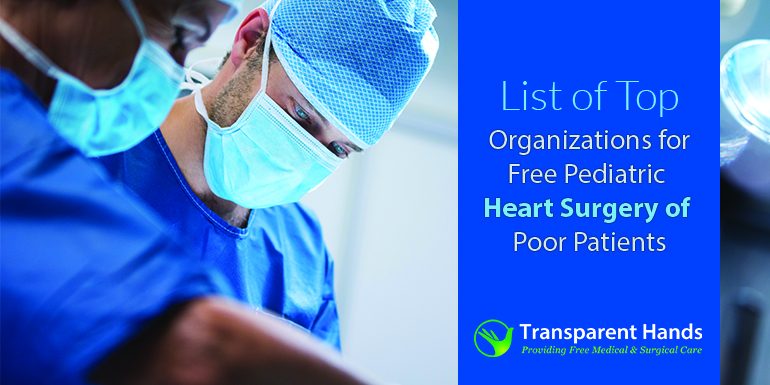List of Top Organizations for Free Pediatric Heart Surgery of Poor Patients

Pediatric heart surgery holds the power to transform lives, offering hope and a brighter future to young hearts and their families. In Pakistan, where medical resources can be scarce for many, organizations that provide free pediatric heart surgery play an invaluable role in saving lives and nurturing hope. This article sheds light on the top organizations in Pakistan dedicated to offering free pediatric heart surgery, showcasing their unwavering commitment to ensuring that every child has a chance at a healthy and thriving life
1. Transparent Hands
Free Healthcare Services for Those Who Cannot Afford
Transparent Hands is the largest technology platform for crowdfunding in the healthcare sector of Pakistan. It offers a complete range of free healthcare services, including medical and surgical treatments, medical camps, and telehealth facilities, to the underprivileged community of Pakistan.
The platform provides visibility of needy patients and builds a personal and trusted bond between patients and donors while ensuring complete transparency. It also sets up free medical camps in the rural areas of Pakistan in which free medical consultation, free medicines, and free diagnostic tests facility is provided to deserving patients.
Committed to Provide Free Healthcare Services to People in Need
Donors worldwide can use our online Crowdfunding web portal and donate through 100% secure payment modes. They could select any patient, fund the treatment, and receive regular feedback and updates until the patient is recovered completely.
2. PCHF
Dedicated exclusively to pediatric cardiac care, PCHF is a beacon of hope for families in need. Their focus on providing free surgeries to children with congenital heart diseases showcases their commitment to healing and nurturing young hearts. PCHF’s mission extends beyond medical interventions, as they also raise awareness and advocate for better pediatric heart care in Pakistan.
3. National Institute of Cardiovascular Diseases (NICD)
NICD is a pioneer in cardiovascular care in Pakistan. Their pediatric cardiac unit offers free surgeries to children with congenital heart conditions. With a multidisciplinary approach and a team of skilled professionals, NICD ensures that young patients receive the highest standard of care, giving them a chance to lead healthy lives.
4. The Indus Hospital
The Indus Hospital’s commitment to providing free quality healthcare extends to pediatric heart surgery. With state-of-the-art facilities and a team of experienced surgeons, they offer hope to families who otherwise might not have access to such specialized care. The Indus Hospital exemplifies the potential of healthcare to transform lives.
5. Punjab Institute of Cardiology
The Punjab Institute of Cardiology is a hub of innovation in cardiac care. Their pediatric cardiac unit offers free surgeries to children with congenital heart issues. Through their dedication to research, education, and patient care, they contribute significantly to advancing pediatric heart surgery in Pakistan.
6. Mayo Hospital Lahore
Memon Medical Institute Hospital’s dedication to pediatric heart care is evident through their free surgical interventions. By offering advanced medical treatments and expertise, they make a significant impact on the lives of children and families in need.
8. Kulsum Healthcare Foundation
Kulsum Healthcare Foundation’s mission is to provide free medical care to those who cannot afford it. Their pediatric heart surgery initiatives stand as a testament to their commitment. By offering hope and healing to young hearts, they contribute to a healthier future for children and their families.
Conclusion
The top organizations for free pediatric heart surgery in Pakistan embody the spirit of compassion, dedication, and transformation. Their work goes beyond medical procedures – it offers hope, healing, and a chance at a better life for children and their families. Through their relentless efforts, these organizations showcase the immense potential of healthcare to uplift lives, strengthen communities, and shape a brighter future for the young hearts of Pakistan.










Leave Your Comments